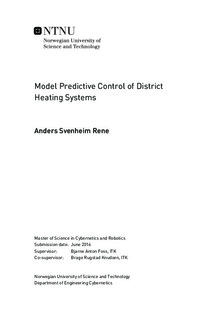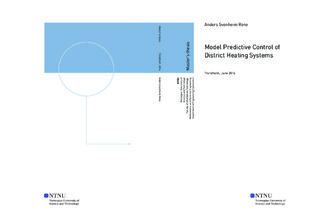| dc.description.abstract | A district heating system is a network of pipelines where heating is delivered to a number
of customers from a centralized heating station. For the operators of these systems, the
ideal operating scenario is to deliver enough heat to satisfy the heating demand of every
customer on the network with the lowest possible costs.
District heating systems are slow processes, and the heated water may travel for several
hours from it leaves the heating station until it reaches the most distant customer. Today,
many district heating systems in Norway are operated largely based on operational
experience, without any available tools for predicting future states or demands.
Model predictive control on district heating systems has been applied in other countries,
and has been reported to be very effective. Motivated by its success, this thesis has
reviewed the benefits and challenges of applying model predictive control to district heating
systems in Norway.
In this thesis, a model predictive controller has been simulated on a small-scale district
heating system in Klæbu, a small urban area approximately 19 km south of Trondheim,
Norway. This system consists of a single plant which delivers heating on two separated
lines. The simulation has been performed on the line that covers the central areas of Klæbu.
The line only has five customers, making it a very simple district heating network, well
suited for initial testing of predictive control.
The model predictive controller implemented on the district heating system in Klæbu
controls the supply temperature of the water delivered from the plant. The controller uses
a model that predicts the future heat demand and the transport delay in the network. Based
on this model, the simulated controller generates values that meet the predicted heat demand
without violating the system constraints. However, the actual performance of the
controller has been found challenging to assess. This is due to a low amount of reliable
measurements on the network, unclear methods of how to interpet the available measurements,
and a lacking definition of economic optimization. | |

